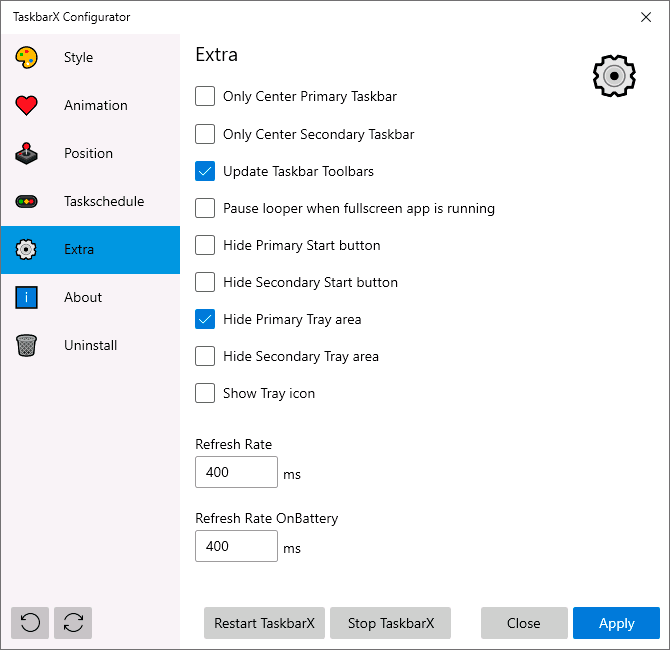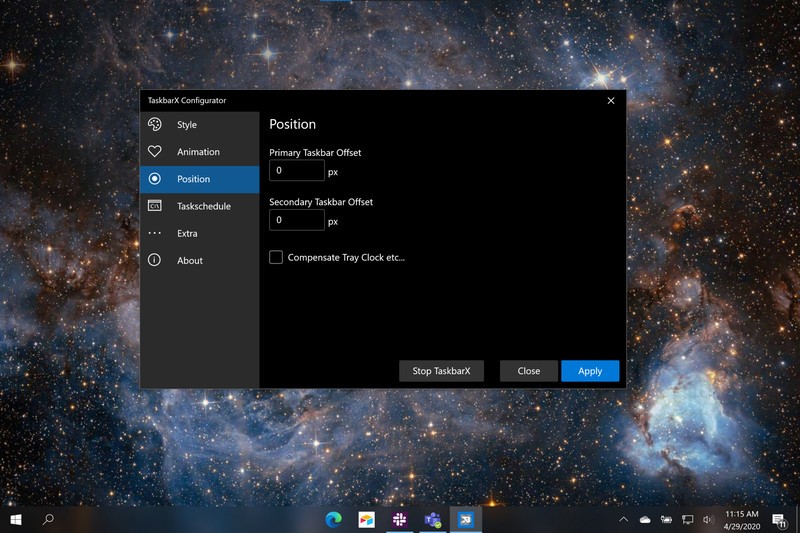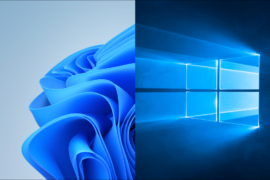By default, the Windows 10 taskbar provides the user with some customization options, such as small or regular icons, color choices, and some others. However, in some cases, this may not be enough. For example, a common question: how to center icons or make the taskbar transparent? There are other tasks. One of the more straightforward free programs to do this is TaskbarX (formerly FalconX).
In this overview, in detail about the possibilities of customizing the taskbar’s design in TaskbarX, the available functions and features of using the program.
Download and install
TaskbarX is available from the Microsoft Store but requires a fee. However, if you use the developer’s official website –https://chrisandriessen.nl/taskbarx, we can download the program as a ZIP archive (portable version) completely free of charge. Also, it is available for free on the author’s GitHub.
The program’s portable version does not require any installation on the computer: just unpack the archive with the program files to a convenient location on your computer and start using it.
Using TaskbarX to Change the Appearance of the Taskbar
In the folder with the unpacked program, you will find two main executable files – TaskbarX, which launches the program itself, and TaskbarX Configurator to customize exactly how your taskbar will look.
To get started, you just need to launch TaskbarX (the icons on the taskbar will be located in the center between the leftmost system elements of the taskbar and icons in the Windows 10 tray). After that, launch TaskbarX Configurator to customize the appearance.

Available settings in the TaskbarX Configurator (to see the effect of the changes made, just click the “Apply” button):
- Style – the style of the taskbar. You can enable a transparent taskbar, select other design options: gradient, semi-transparent, with a blurred background. Here you can also set the color parameters and the taskbar’s transparency level (it is not used for selecting the “Transparent” item with a completely transparent taskbar). The “Switch back to Default on maximized window” checkbox enables the standard view of the taskbar when maximizing the window to full screen.
- Animation – the style and timing of animation when new icons appear on the taskbar (when starting a program).
- Position – the shift of the taskbar icons relative to the automatically calculated center. The Primary Taskbar here means the taskbar on the first monitor, Secondary – on the second and subsequent ones. The item Skip Resolution allows you to disable the placement of icons in the center for the selected screen resolution. Here you can completely disable the placement of icons in the center (item “Don’t Center Taskbar”).
- Taskschedule – Clicking the “Create” button on this screen will create a Windows 10 Task Scheduler task that will automatically launch TaskbarX upon login.
- Extra – additional settings. Allows you to enable centering for only one monitor, hide the notification area and the Start button on the taskbar, enable the display of the TaskbarX icon in the notification area. The “Pause looper when fullscreen app is running” item disables the taskbar redrawing in full-screen programs (it can be useful in games if the taskbar appears on top of the game).
In order to remove other elements of the taskbar (not reflected in the Extra section), for example, the search or the task view button, use the system tools: just right-click on the item, disable the display of an unnecessary button or search bar. The image below is an example of the result after using TaskbarX and system tools to customize the taskbar.

It’s relatively easy to figure it out, but it works not only for the taskbar located at the bottom of the screen but also for its other locations.




